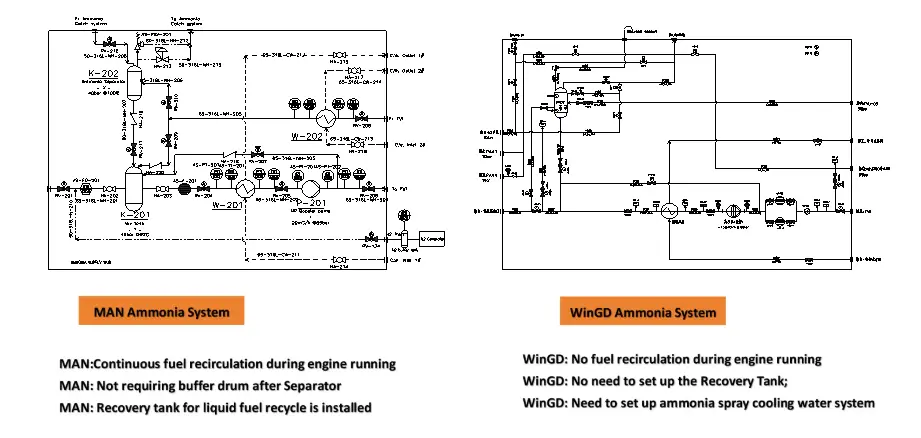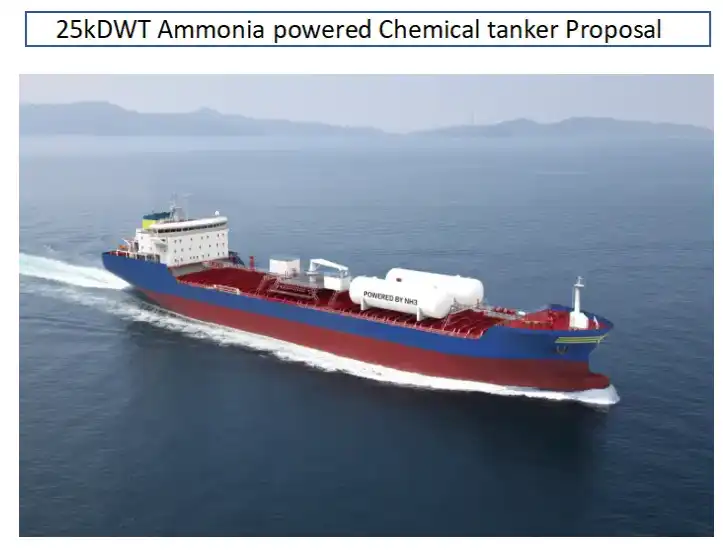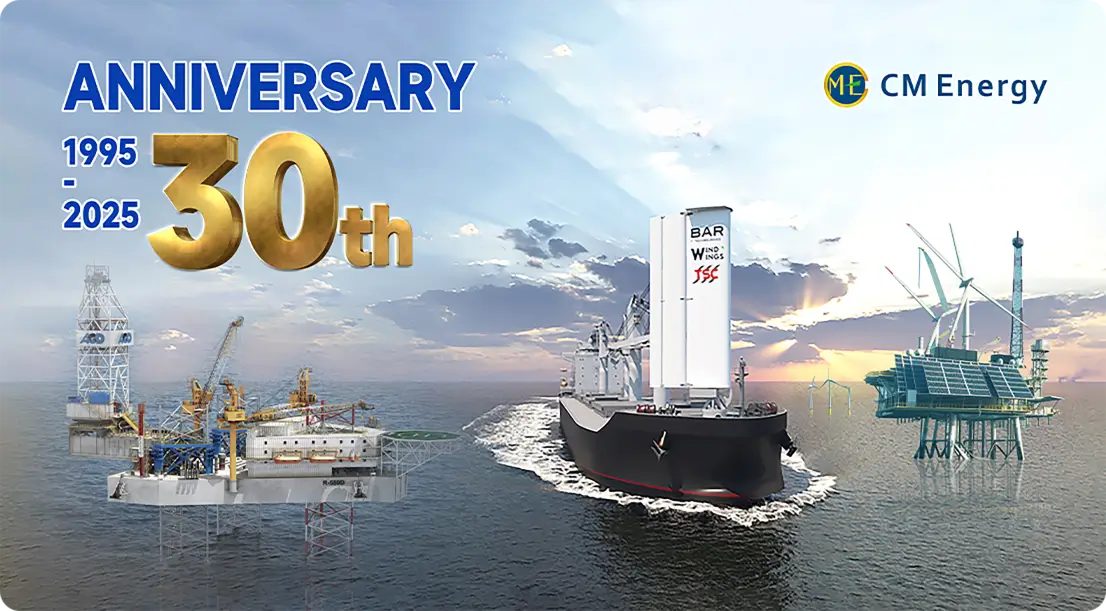Ammonia Fuel Provisioning Hub
Overview of the Ammonia Fuel Provisioning Hub
The Ammonia Fuel Provisioning Hub comprises a range of critical components, including the filling and storage system, Ammonia Fuel Supply System (AFSS), Fuel Value Unit (FVU), vent system, Ammonia Release Management System (ARMS), ventilation system, inert gas system, the engine’s internal ammonia fuel unit, and the safety mechanism. It is important to recognize that there are notable distinctions between the systems employed by MAN and WinGD.

Why Choose Us?
1. Unrivaled Industry Expertise – Our broad experience in designing and constructing dual-fuel vessels, liquefied gas carriers, chemical tankers, and their associated systems has firmly positioned us as a leader in the sector.
2. Comprehensive Service Offering – We deliver a complete range of services, including Methanol Fuel Supply Systems (MFSS), LNG Fuel Supply Systems (FGSS), Ammonia Fuel Supply Systems (AFSS), and LPG Cargo Handling Systems (CHS), all through a single provider.
3. Proven Delivery Performance – With 19 successful installations of clean fuel supply and cargo handling systems, our reputation is built on reliability and consistent quality.
4. Innovative AFSS Development – By leveraging deep expertise in ammonia carrier construction and LPG retrofitting, we independently design advanced ammonia fuel supply systems and actively participate in zero-carbon innovation projects.
5. End-to-End Lifecycle Support – From initial design to manufacturing and final installation, we provide complete lifecycle services, including the construction of multiple units and comprehensive post-delivery support.
Product Specifications

Product Features
1. Integrated Safety and Efficiency – The Ammonia Fuel Provisioning Hub is designed to safely and efficiently manage ammonia bunkering and storage, in full compliance with IMO standards and the specific low-flashpoint fuel requirements of the maritime industry.
2. Precise Flow and Safety Controls – It features accurate flow regulation and integrates essential safety systems, including emergency shutdown, leak detection, and inert gas compatibility, to ensure safe operation.
3. Environmentally Responsible Design – The system incorporates vapor control technologies such as thermal oxidation and re-liquefaction to reduce environmental impact, particularly in low-pressure storage environments.
4. Effective Ventilation and Risk Control – It provides robust ventilation for both enclosed and exposed areas, utilizing inert gas solutions to mitigate explosion risks in potentially hazardous zones.
5. Advanced Pressure Control – By combining thermal oxidation units with sub-cooling or re-liquefaction systems, the system effectively regulates ammonia vapor pressure in low-pressure tanks, enhancing operational safety.

Installation Process
1. Vessel Design Assessment – Begin with a thorough review of the vessel’s design and system interface specifications, ensuring all technical aspects are confirmed before installation starts.
2. Installation Preparation – Verify that all required equipment, tools, and safety measures are fully in place prior to installation.
3. Transport of Pre-Assembled Modules – Deliver the pre-assembled fuel supply system module to the designated site using appropriate lifting equipment, ensuring precise positioning at the mounting location.
4. Module Fixation – Secure the module base to the vessel’s structure, ensuring alignment and structural stability as per the engineering design.
5. Component Connection – Connect the fuel transfer lines, auxiliary piping, and control wiring, while carefully checking the integrity and sealing of all electrical components.
6. Testing and Commissioning – Conduct both individual subsystem tests and full system integration checks to verify the functionality of bunkering, fuel delivery, and safety control operations.
For more product information about Ammonia Fuel Provisioning Hub, please leave a message below.

